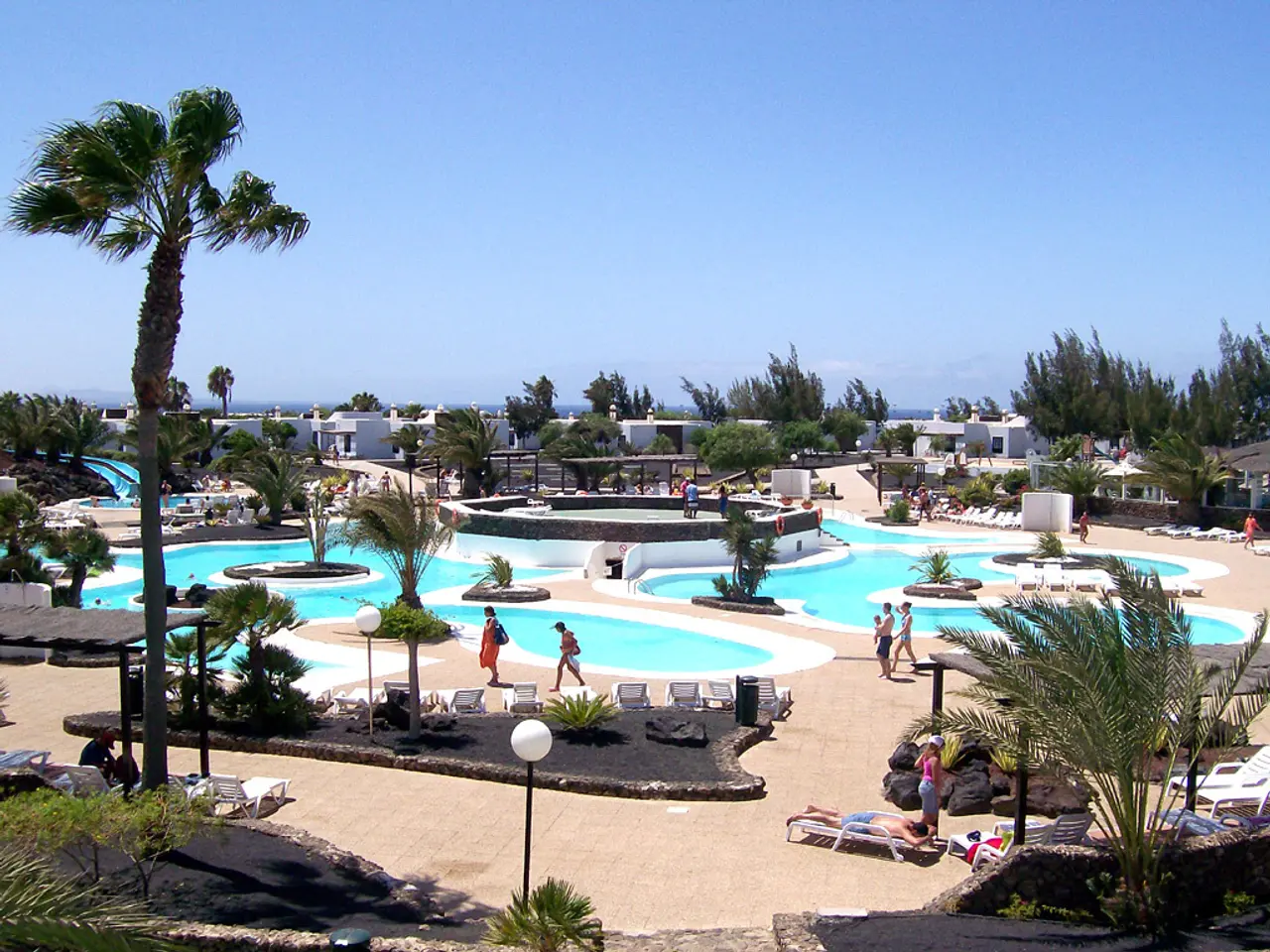Essential Information about Death Valley:
Nestled in the heart of California's Mojave Desert, Death Valley National Park offers a unique and unforgettable experience for visitors. With its vast, remote landscape and diverse scenery, an automobile is essential for exploring this remarkable park. Here's a two-day itinerary that balances iconic viewpoints, manageable trails, and unique desert experiences.
**Day 1: Iconic Viewpoints and Easier Hikes**
Begin your journey at Zabriskie Point, famed for its breathtaking badlands landscape and sunrise views. A short walk from the parking lot ensures you won't miss this must-see viewpoint. Next, venture into Golden Canyon Trail, a popular 2-mile round-trip hike through vibrant canyon walls. For a longer option, this trail connects to Red Cathedral or loops back via Gower Gulch, but the shorter hike is ideal for a half-day.
Afterward, head to Mesquite Flat Sand Dunes, where you can experience the magic of walking on vast sand dunes, especially during dawn or late afternoon when the lighting creates beautiful shadows. Later in the day, ascend to Dante’s View, a high vantage point about 5,000 feet above the valley floor offering panoramic views of the desert and mountains. If time and weather permit, take a short hike to Dante’s Peak for even more expansive vistas.
**Day 2: More Adventurous Hikes and Unique Landscapes**
On the second day, explore Mosaic Canyon, located near Stovepipe Wells. This trail leads through narrow polished marble walls and unique rock formations, offering a striking desert hike. Next, visit Badwater Basin Salt Flats, the lowest point in North America, where you can walk on the vast salt flats, a flat and suitable trail for all levels.
For a longer and more challenging hike, consider climbing to Telescope Peak, the highest point in the park, offering rewarding panoramic views. This hike requires a full day and good preparation. Alternatively, take a scenic drive along Titus Canyon Road or Eureka Dunes to see rugged desert landscapes and wildlife.
When planning your trip, be aware of the park's 6,000 to 10,000 abandoned mines, which may be unstable, contain bad air or poisonous gases, or have dangerous hidden shafts. Always bring at least two liters of water for a short winter hike and at least six liters for summer and longer hikes in Death Valley.
Avoid entering the extreme heat during midday, as temperatures from May through September may top 100°F overnight. Some dangerous creatures, such as rattlesnakes, scorpions, and black widow spiders, live in Death Valley, so be cautious when exploring.
Overnight accommodations within the park include the privately owned Furnace Creek Inn, offering first-class accommodations from $305 (but closed in summer months), and Furnace Creek Ranch, providing cabin and standard motel accommodations with horseback riding and carriage rides, open year-round. The Panamint Springs Resort, located inside the west entrance to the park, offers hotel, camping, and RV park accommodations from $79 and claims to be cooler than accommodations farther inside the park.
From Los Angeles, the most scenic route crosses the eastern Mojave Desert via I-15. Most visitors arrive by automobile from either Los Angeles or Las Vegas. To reach Death Valley from Las Vegas, take Nev. 160 west to Old Spanish Trail (Tecopa Rd.).
Whether you're a seasoned hiker or a casual explorer, Death Valley National Park offers diverse scenery that can be comfortably covered in two days. From sand dunes and salt flats to canyons and mountain peaks, this remarkable park promises an unforgettable adventure.
1.Embarking on an adventure-travel journey, consider the unique exploration of Death Valley National Park, where an automobile is vital for discovering its vast desert landscapes and diverse scenery.
- On the first day of your itinerary, experience the iconic viewpoints of Zabriskie Point and Dante's View, and embark on easier hikes like Golden Canyon Trail or Mosaic Canyon, offering a balance between lifestyle and adventure-travel.
- For those seeking a more challenging hike, aim for Telescope Peak, Death Valley's highest point, or explore rugged terrains along Titus Canyon Road or Eureka Dunes, catering to both seasoned hikers and casual explorers, ensuring a travel experience filled with adventure and discovery.




